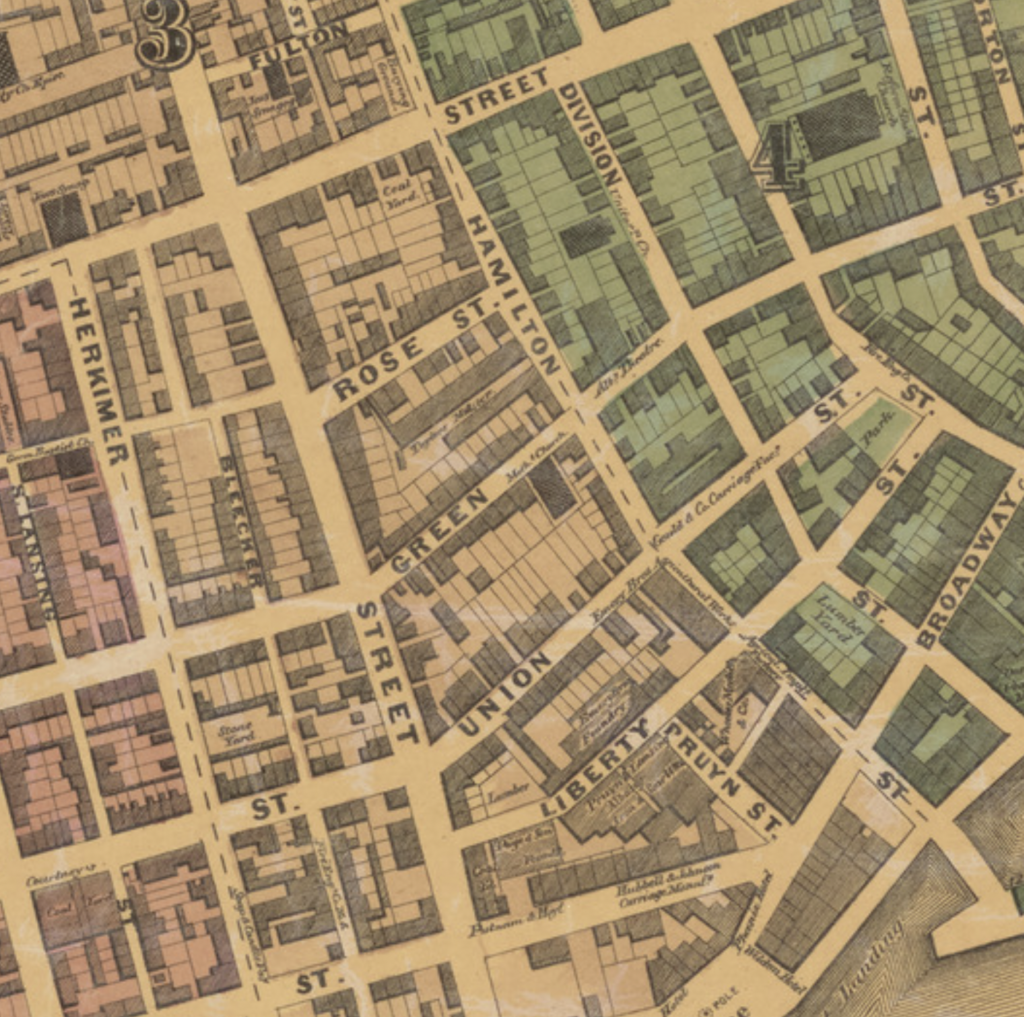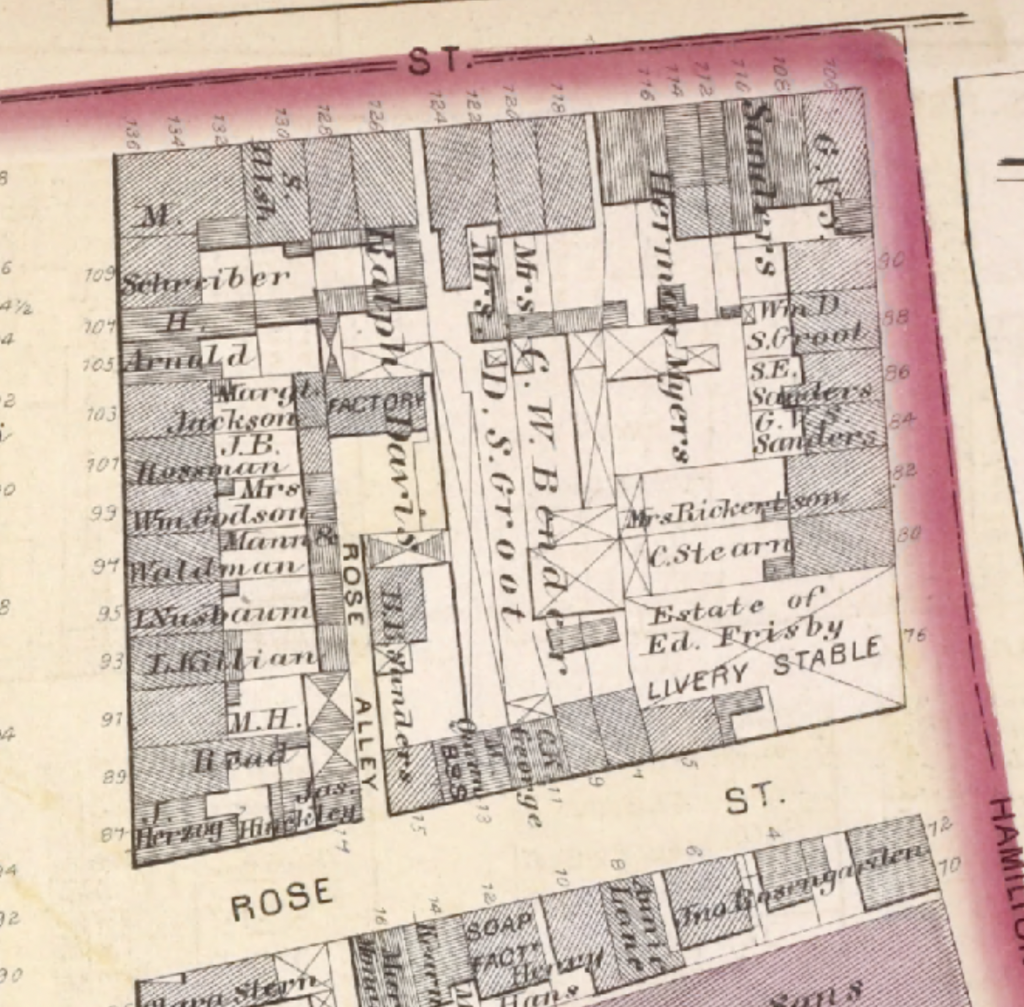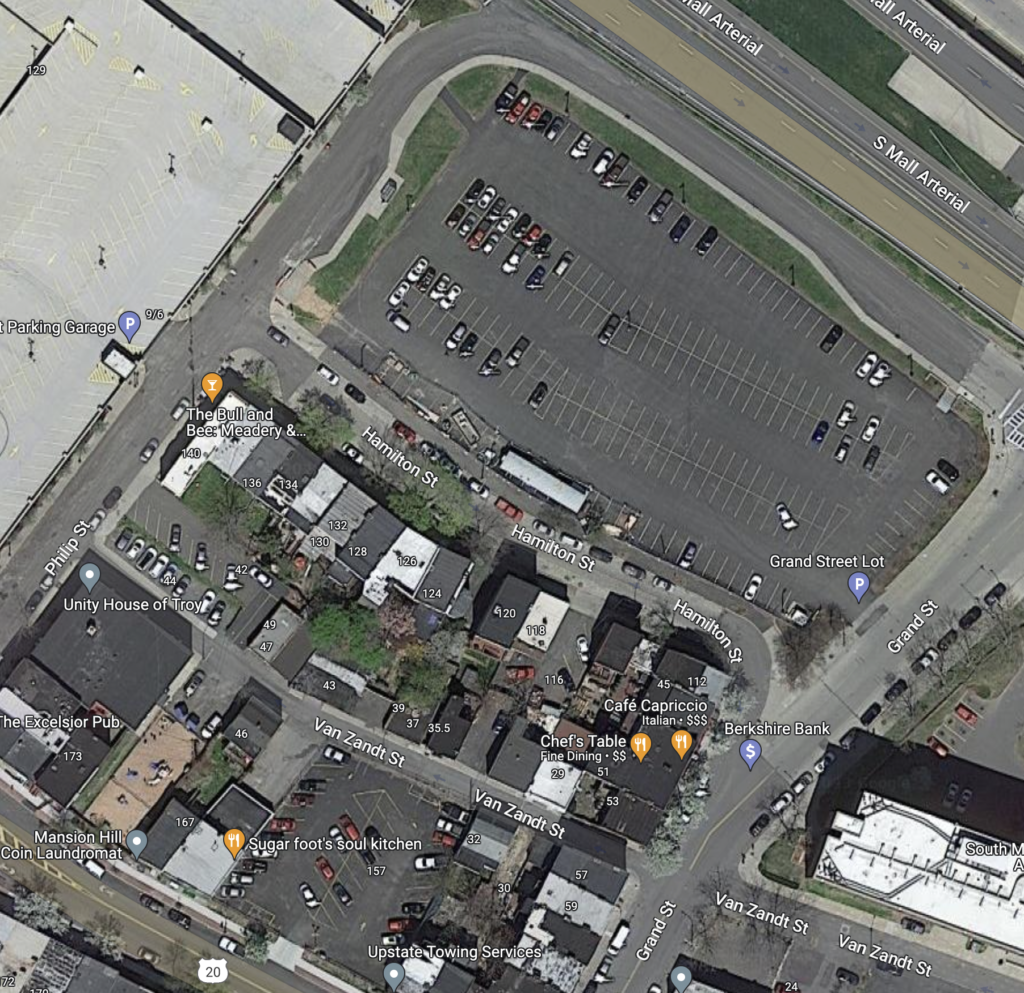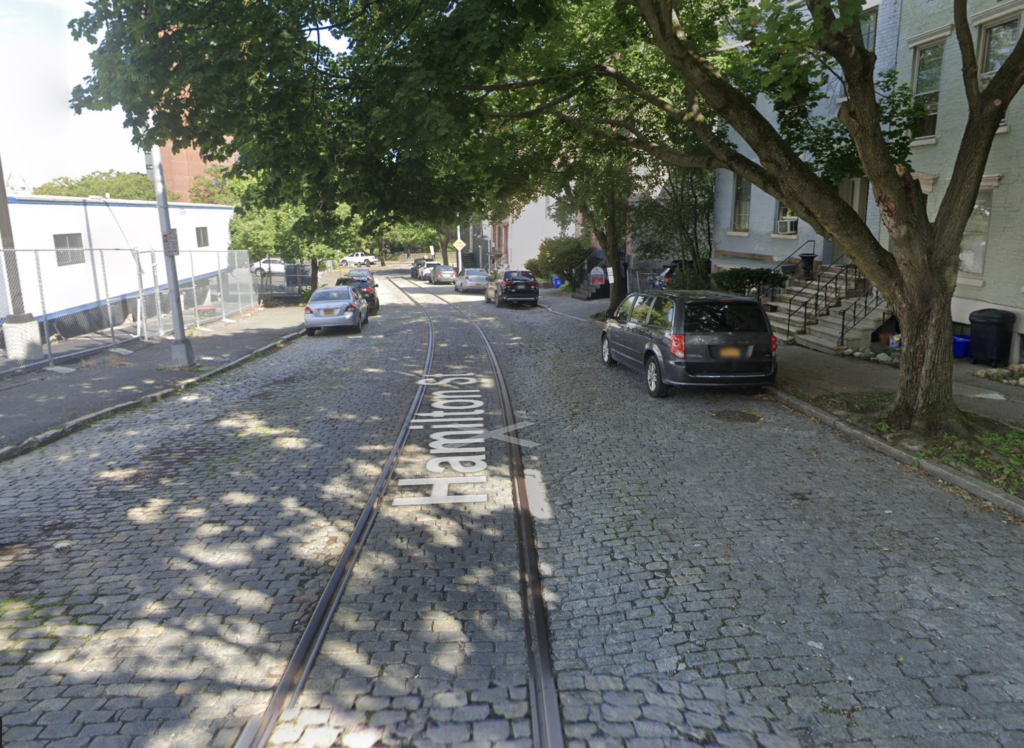As we said last time, with these last several tablets commemorating Albany’s 1886 bicentennial, we’re down to honoring streets instead of people. This one was for Hamilton Street:
Tablet No. 33—Hamilton Street.
Bronze tablet, 7×16 inches, corner building at Hamilton and Pearl streets. Inscription: “Hamilton Street formerly Kilbey Lane.”
We have some bad news about Hamilton Street, at least with regard to its intersection with South Pearl: If any trace of it exists there, it’s really just the driveway in front of the South Mall Towers apartments. No buildings that would have been on any of its corners survive. But according to the 1914 Argus article, it had already been removed from the southeast corner at that time and was “in the custody of city authorities.” If that sounds like punishment, it probably was, and one from which it was likely never released.


Before being named Hamilton, the street was named Kilby (the spelling varies across various sources), running from South Pearl (previously Washington) to the river. We haven’t been able to find any information on why it was named Kilby. Many of the other street names of that era – Monckton, Wolfe, Pitt and Prideaux – related to British officers in the French and Indian War (or, better, the Seven Years’ War), so it wouldn’t be unreasonable to assume that Kilby (or Kilbey) was a British officer in the colonial era. It was renamed to Hamilton in 1805, the year after Hamilton’s death, when several streets were extended west of Eagle and there was a general renaming of the old streets, replacing old heroes with new but also replacing proper names with numbers, in some cases. There appears to have been no particular method to the renaming.
Hamilton was never one of Albany’s more major thoroughfares, but it was home to at least one person central to the Albany bicentennial markers: William Hailes, the founder whose name is on many of the original markers, was living at 197 Hamilton around the time of the markers being cast. We can’t help but wonder if that influenced the choice to recognize this street. However, the plaque was placed several blocks away from his home, which was between Eagle and High. That area, too, is completely gone, subsumed by the development of the Empire State Plaza. Downtown, only a stub of Hamilton remains, behind the South Mall Towers, running from Grand Street and Philip Street. Boy, did we do these areas dirty with unnecessary demolition, and utter erasure of historic streets.

As for Hamilton – spare us the singing for the man who devised the “durable lease” that extended the control of the Patroon and effectively kept Rensselaerswyck under feudalism for decades after it was supposed to have ended. And while historians say he had clear anti-slavery sentiments, his anti-slavery actions were limited and, as Lin-Manuel Miranda said in an interview with NPR, Hamilton “remained complicit in the system.” He didn’t marry into a major slave-holding family for nothing.
But at least this was a street named for someone with a lasting presence in world history and very solid Albany connections – and, in true Albany fashion, the only remnant of the original street honoring him is a stub, with a massive ugly parking lot on one side, and on the other side, a quite nice strip of rowhouses in what was once a vibrant neighborhood. The street itself is historic – still paved with Belgian pavers (we didacts will correct you if you call them cobblestones, which are rounded), still lined with trolley tracks that haven’t seen a trolley since 1946, when United Traction converted to buses.


Interesting and informative article. Thanks for it, and for your excellent website.
Much appreciated!